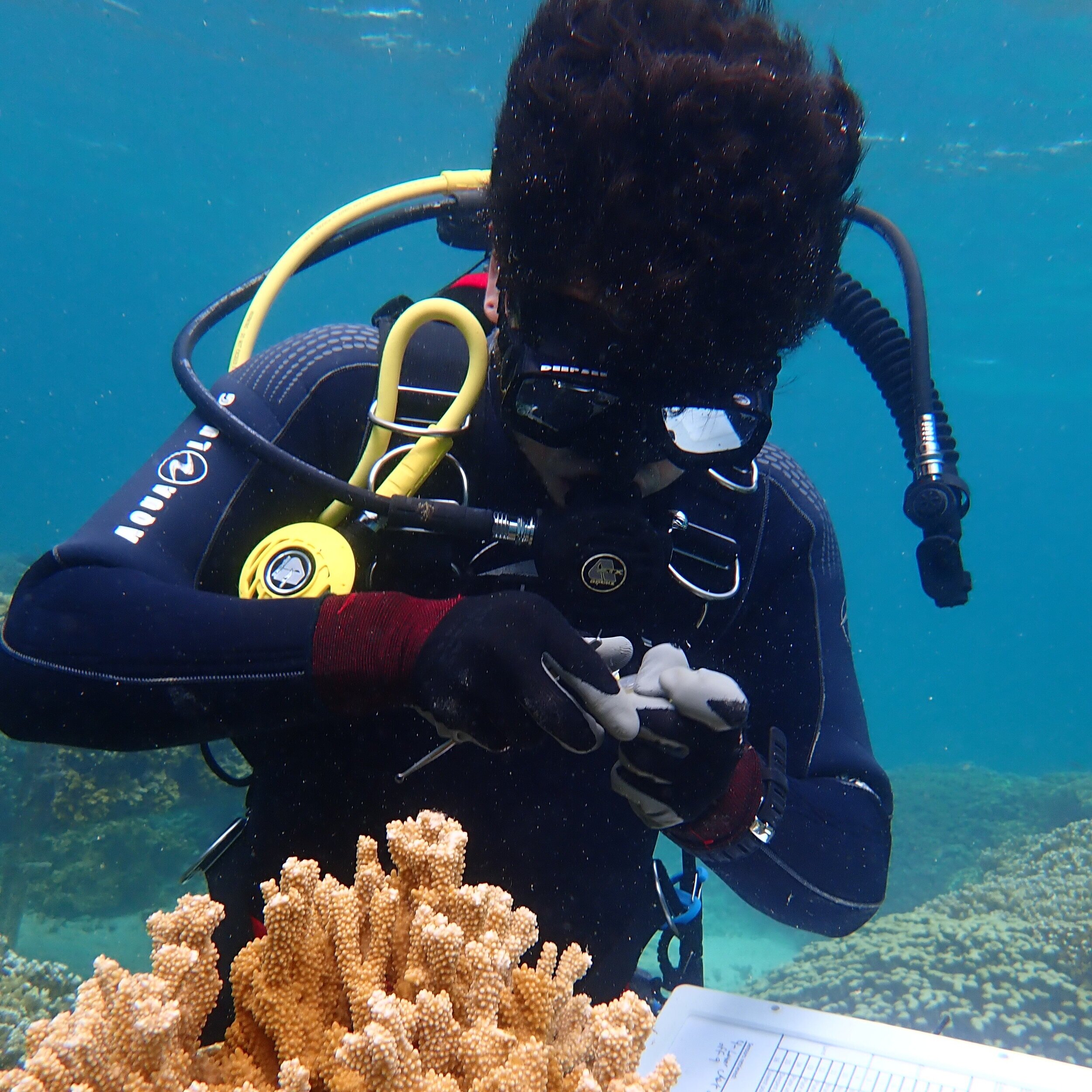Shayle Matsuda
Postdoctoral Researcher
My Research
I use technology and biology in my research to understand what will happen to corals under future climate conditions and to develop solutions to help them survive into the future. My work centers around coral symbioses – the complex partnerships between corals the algae and bacteria that live within their tissues. I use 3D-imaging and DNA sequencing to map microenvironments within colonies with symbionts and stress responses, and am currently investigating the prospect of increasing thermal tolerance by forming new symbioses with more thermally tolerant symbionts.
Education and Experience
PhD - University of Hawaii Mānoa and the Hawai`i Institute of Marine Biology, Marine Biology, in progress
MS - San Francisco State University, California Academy of Sciences, Biology - Ecology, Evolution and Conservation Biology, 2015
BA - University of California Santa Cruz, Environmental Studies (agroecology and water policy) and Feminist Studies (gender studies and transnational feminist theory), 2003
Current Projects
Spatial variation in intra-colonial molecular characteristics of reef-building corals
Species-specific short-term response to thermal stress
Publications
Wegley Kelly L, Nelson CE, Aluwihare LI, Arts MGI, Dorrestein PC, Koester I, Matsuda SB, Petras D, Quinlan ZA and Haas AF. Molecular Commerce on Coral Reefs: Using Metabolomics to Reveal Biochemical Exchanges Underlying Holobiont Biology and the Ecology of Coastal Ecosystems. Frontiers in Marine Science. 2021;8: 969.
Ahmadia GN, Cheng SH, Andradi-Brown DA, Baez SK, Barnes MD, Bennett NJ, Campbell SJ, Darling ES, Estradivaria, Gill D, Gress E, Gurney GG, Horigue V, Jakub R, Kennedy EV, Mahajan SL, Mangubhia S, Matsuda SB, Muthiga NA, Navarro MO, Santodomingo N, Vallès H, Veverka L, Villagomez Am Wenger AS and Wosu A. Limited Progress in Improving Gender and Geographic Representation in Coral Reef Science. Frontiers in Marine Science. 2021;8: 1334.
Hancock JR, Barrows AR, Roome TMCN, Huffmyer AS, Matsuda SB, Munk NJ, Rahnke SA, Drury C. Coral husbandry for ocean futures: leveraging abiotic factors to increase survivorship, growth and resilience in juvenile Montipora capitata. Marine Ecology Progress Series, 657, 123-133
Roach TNF, Yadav S, Caruso C, Dilworth J, Foley CM, Hancock JR, Huckeba J, Huffmyer AS, Hughes K, Kahkejian VA, Madin EMP, Matsuda SB, McWilliam M, Miller S, Santoro EP, Rocha de Souza M, Torres-Pulliza D, Drury C, Madin J. A field primer for monitoring benthic ecosystems using structure-from-motion photogrammetry. Journal of Visualized Experiments. (in review)
Barott KL, Huffmyer AS, Davidson JM, Lenz EA, Matsuda SB, Hancock JR, et al. Coral bleaching response is unaltered following acclimatization to reefs with distinct environmental conditions. Proc Natl Acad Sci U S A. 2021;118. doi:10.1073/pnas.2025435118
Matsuda SB, Huffmyer AS, Lenz EA, Davidson JM, Hancock JR, Przybylowski A, et al. Coral Bleaching Susceptibility Is Predictive of Subsequent Mortality Within but Not Between Coral Species. Frontiers in Ecology and Evolution. 2020;8: 178.
Huffmyer, A.H., Matsuda, S.B., Eggers, A.R., Lemus, J.D., Gates, R.D. (2019). Evaluation of laser scanning confocal microscopy as a method for characterizing reef-building coral tissue thickness and Symbiodiniaceae fluorescence. Journal of Experimental Biology 223(6) jeb220335
Menezes, S., Canfield, K., Matsuda, S., Moore, A., Austin, A., Dewsbury, B., Feliú-Mójer, Mcduffie, K., Moore, K., Reich, C., and Smith, H. (2019). Science communication demands a critical approach based in inclusion, equity, and intersectionality. Frontiers in Communication, section Science and Environmental Communication. Journal of Experimental Biology, Methods & Techniques.
Matsuda, S.B. and Gosliner, T.M. (2018). Glossing over cryptic species: Descriptions of four new species of Glossodoris and three new species of Doriprismatica (Nudibranchia: Chromodorididae). Zootaxa, 4444(5), 501–529.
Matsuda, S. B., & Gosliner, T. M. (2017). Molecular phylogeny of Glossodoris (Ehrenberg, 1831) nudibranchs and related genera reveals cryptic and pseudocryptic species complexes. Cladistics, 1–16.


